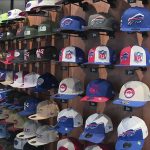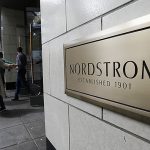This week, several companies updated analysts and investors on their third quarter prospects and growth initiatives with new guidance, new SEC filings, or through presentations at the Wachovia Consumer Growth Conference in New York, NY.
lululemon athletica boosted their Q3 guidance and the vertical retail chain is now expecting comp sales increases in the mid-30's versus previous guidance of mid- to high-teens. The main cause for this increase in sales is the strengthening of the Canadian Dollar in relation to the U.S. Dollar. On a constant dollar basis, the revised guidance translates into a mid-20's percentage increase over 2006. Even though the increase in sales is expected to be partially offset by the currency impact on SG&A costs in Canada, the company expects to exceed its previous guidance of 5 cents to 6 cents EPS for the Q3.
LULU management also gave investors an update on their growth plans for 2008 and beyond at the Wachovia conference. The retailer is taking a grassroots, specialty approach to its marketing by seeding product to fitness and training professionals in local markets. Bob Meers, lululemons CEO said that during his days at Reebok, Nike and adidas, they were spending 15% of sales in marketing through celebrity endorsement and TV ads. LULU is spending less than 5% of sales and “having much more direct impact,” because the fitness community is much more grassroots oriented today.
The companys new store strategy is focusing on strategic markets and clustering stores around those markets. Currently the company has identified several markets and has plans for up to 300 stores in the U.S. and another 50 in Canada. The average footprint is about 2,500 square feet with a “minimum” contribution of $750 per square foot in the first year of operation. This baseline gives the retailer just under $1.9 million of sales per store. LULU spends about $825,000, to open a store with about $500,000 per store in build-out costs, pre-opening costs of about $175,000, and the balance going to initial inventory and supplies for the store. This investment is paid back in, “no more than 18 months,” and in many cases faster than that.
On the sourcing side, LULU has some unique strategies and long-term viewpoints. Currently, 10% of the companys products come out of Peru and Israel, with Peru being “a real key market,” because it allows duty free access to Europe, he U.S., and, shortly, Canada. Management said that they are getting “very high quality” product coming out of Peru and are building a big manufacturing footprint there.
Cabelas also updated its Q3 and full-year 2007 guidance. The company now expects revenues of approximately $547 million, increasing 11.5% from last year, with a 4.2% increase in direct sales and a 4.6% comps increase. While the top-line remains healthy, CAB management reduced guidance on earnings due to margin pressures during the quarter. Now, CAB believes 2007 diluted EPS will increase in the high-single-digit range versus previous guidance of mid-teens.
Wolverine World Wide filed its 10-Q with the Securities and Exchange Commission last week, providing more details on all of its reporting segments. WWWs Outdoor Group recorded revenue of $121.8 million for the third quarter, a 9.0% increase over the third quarter of the prior year. Merrell accounted for $15.0 million of the increase over the prior year, due to strong results from the Outventure product categories and the launch of the Merrell Apparel business. Sebago saw a $1.2 million revenue increase and Patagonia Footwear contributed $3.8 million in revenue in the third quarter.










